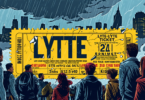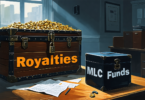The buzz around nonfungible tokens (NFTs) is reaching a fever pitch. Enthusiasts claim NFTs will permanently alter how we buy and sell everything from artwork and music to fashion and real estate. Skeptics say they are yet another overhyped bubble destined to burst — the Dutch tulips or Beanie Babies of the 2020s.
It’s too early to tell which camp will prevail, but there’s no denying that NFTs are sparking fascinating conversations about technology, art, culture and authenticity across a wide range of industries. I recently wrote a simple guide to NFTs from a consumer perspective, asking pertinent questions related to legal, financial and even environmental issues. Now let’s look at the other side of the token and explore the considerations for sellers.
How NFTs Work
NFTs are digital assets that exist on a blockchain — usually the cryptocurrency Ethereum blockchain — and are used to represent collectibles, such as videos, images, music and memes. Each NFT has a unique valuation and contains electronic identifiers that verify its authenticity and ownership. Anyone can take a screenshot of Twitter CEO Jack Dorsey’s first tweet from 2006, but the buyer who paid $2.9 million for it as an NFT received the equivalent of a crypto-backed, autographed version of the tweet.
What’s In It For Sellers?
This method of confirming the value and provenance of digital content is appealing to many different types of creators, who can upload and sell their work on NFT marketplaces like OpenSea, Rarible and YellowHeart. For creators who have long fought to maintain control over their intellectual property and profits, NFTs open up new possibilities.
Mikel Jollett, lead singer of the band Airborne Toxic Event, wrote an op-ed for NBC News in March about the potential for NFTs to address problems in the music industry. In the current business model, artists receive an average of 12% of all profits from streaming or sales of their music, and the rest goes mainly to labels and streaming services. Since the top 1% of artists earn 90% of all streaming income, musicians with a smaller following have an even harder time making money from their work, especially with tours canceled during the pandemic. Artists are starting to sell collectibles as NFTs, including music videos, limited digital versions of albums and one-of-a-kind fan experiences.
“But more important than the money-making promise NFTs offer to musicians is what the phenomenon is revealing: There is a massive gulf in our culture between the value music brings to people’s lives and the price they currently pay for it,” wrote Jollett.
We can easily apply this concept to other forms of digital creative content and imagine NFTs in countless applications: first-edition books, limited-run comics, original photography and video series.
What To Consider Before Selling
Who truly owns a piece of writing, art, music or other content in a digital world? How can you prove it? These questions have been debated for decades, and NFTs add another layer of complexity. Here are a few issues to consider if you’re thinking about becoming a seller:
• Where will you sell your work?
• What percentage of the sale will the platform take?
• How many times can you sell each item?
• How is each sale beneficial to you?
• Are you able to retain any rights to the work?
• If you keep all rights to the original work — a painting, for example — do the rights for future production of new NFTs based on that work go with the new owner? Can you set limitations based on a physical asset?
• How do you authenticate your work to protect it from unauthorized reproduction, copyright infringement or plagiarism? What happens if someone creates an NFT from a photo of your work on a different blockchain, for instance?
• What legal rights for buyer and seller do you want to include in the smart contract that accompanies an NFT? Do you have an obligation to the original purchasing party to protect their rights, for example, and do you need to outline an indemnification clause in the contract?
• Is the contract infinite or defined by a specific timeframe?
NFTs are still very new on the scene. They have exciting potential for sellers, especially creators looking for different marketplaces for their work, but they also introduce unforeseen risks and challenges. The market is young, yet conservative estimates report that it has grown by more than 1700% since the beginning of 2021. Time will tell if NFTs live up to the hype or if the bubble soon bursts. Until then, keep an open mind and keep asking questions.
Source: Forbes Jeff Bell







